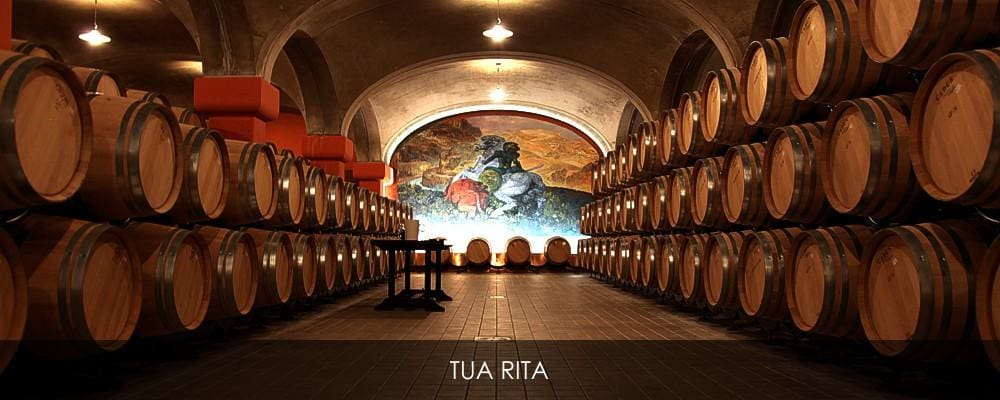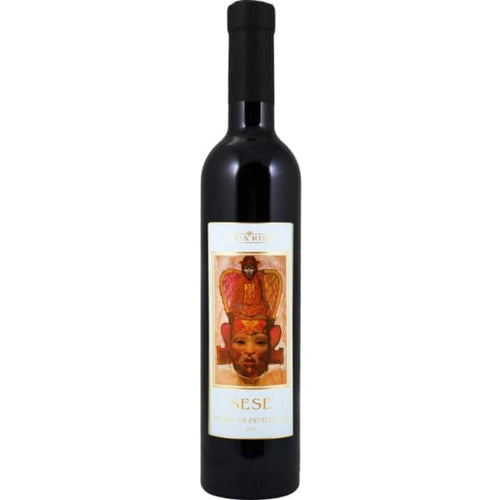
Tua Rita
Even when the Super Tuscan pioneers were establishing Bolgheri as a great wine-producing region to the south of Chianti, there were limits to how far down Tuscany the great winemaking aristocratic families would go. So it was up to a modest farming couple to establish an estate (if that’s not too grand a word) in the Alto Maremma, beside the Golfo di Follonica. The intention in 1984, when Rita Tua and Virgilio Bisti bought a property near Suvereto, was simply to live in harmony with nature and farm in a natural way. They had no idea that an initial planting of two hectares of Cabernet Sauvignon and Merlot would be the start of the second generation of Super Tuscans.
The low-elevation, gently sloping Tua Rita hillsides, standing just 100m above sea level, are rich in silt and clay, which has been carried down over the years from the metalliferous hills of the Val di Cornia further inland, giving the earth a nuanced character of iron richness and salinity - a personality which is carried through the vines and fruit into the wines through a policy of minimal intervention.
The grapes from the early plantings mainly found their way into Sassicaia, while Rita Tua and Virgilio expanded their vineyards and built towards creating their own Tua Rita wine in 1992. They took on Luca D’Attoma as consultant oenologist but remained closely involved themselves, as well as staying true to the original aim of farming naturally, although without a formal definition such as organic or biodynamic. Luca moved on to other projects in 2000, with Tua Rita wine well established, but returned to the fold after a 10 year break to help in the wake of the sad death of Virgilio in 2010.
Despite the expansion of the Tua Rita winery and cellar at the turn of the millennium, hand-picked grapes still arrive in small batches at harvest. They are meticulously selected and de-stemmed at the sorting tables.Then, after gentle crushing, the must is transferred to conical wooden vats for fermentation. Depending on the vintage, maceration lasts twenty-five to thirty days, with carefully regulated remontage. After fermentation, the Tua Rita wine is transferred by gravity flow into oak barriques for malolactic fermentation, before maturing in oak for at least 18 months.
As the vineyards expanded to 9.5 hectares, then 20ha by 2000 and now 35ha, other varietals were planted - including Cabernet Franc, Tua Rita Syrah and Sangiovese. This has allowed some outstanding and highly distinctive wines to be produced.
It didn’t take long for success to come to Tua Rita after the first vintage in 1992. Tua Rita Giusto di Notri, a blend of Cabernet Sauvignon, Merlot and Cabernet Franc, was immediately recognised as a Bordeaux-style wine to rival the established Super Tuscans a few kilometers north - a vibrant expression of pure fruit with an opulence expressive of the extra warmth of this terroir.
Tua Rita Giusto di Notri arrived alongside a single-varietal wine which would hit the heights for international connoisseurs, the 100% Merlot Tua Rita Redigaffi. James Suckling awarded the 1997 100 points. Robert Parker called the 1999 Tua Rita Redigaffi “as close to perfection as a wine can get”, then relented the following year to give the 2000 vintage his first ever 100. In subsequent vintages, Tua Rita Redigaffi has continued to soak up the superlatives - an iron fist in a velvet glove, with jammy dark fruit notes, dark chocolate and strong spices.
Other wines have come along over time. Another monovarietal wine, Tua Rita Syrah, was to become Virgilio’s favourite - a rich and silky wine with many layers. Rita Tua and Virgilio’s daughter, Simena, and son-in-law, Stefano Frascolla, now run operations - with Rita Tua more often in the kitchen than the cellar nowadays (though no less certain of the way things should be done!).
A small estate of Stefano’s, bought back in 1997, is the source of Tua Rita’s second wine, Rosso dei Notri - a Sangiovese, Cabernet Sauvignon, Merlot and Syrah blend. Sangiovese is front and centre of the opulent Perlato del Bosco Rosso, with a small but balancing contribution from Cabernet Sauvignon, while its white counterpart blends Chardonnay with Gewürztraminer and Riesling. Over 30 years on, Rita Tua’s family is living and working in harmony with nature as she and her husband intended - they just happen to be producing some of Italy’s finest wines as well.
The low-elevation, gently sloping Tua Rita hillsides, standing just 100m above sea level, are rich in silt and clay, which has been carried down over the years from the metalliferous hills of the Val di Cornia further inland, giving the earth a nuanced character of iron richness and salinity - a personality which is carried through the vines and fruit into the wines through a policy of minimal intervention.
The grapes from the early plantings mainly found their way into Sassicaia, while Rita Tua and Virgilio expanded their vineyards and built towards creating their own Tua Rita wine in 1992. They took on Luca D’Attoma as consultant oenologist but remained closely involved themselves, as well as staying true to the original aim of farming naturally, although without a formal definition such as organic or biodynamic. Luca moved on to other projects in 2000, with Tua Rita wine well established, but returned to the fold after a 10 year break to help in the wake of the sad death of Virgilio in 2010.
Despite the expansion of the Tua Rita winery and cellar at the turn of the millennium, hand-picked grapes still arrive in small batches at harvest. They are meticulously selected and de-stemmed at the sorting tables.Then, after gentle crushing, the must is transferred to conical wooden vats for fermentation. Depending on the vintage, maceration lasts twenty-five to thirty days, with carefully regulated remontage. After fermentation, the Tua Rita wine is transferred by gravity flow into oak barriques for malolactic fermentation, before maturing in oak for at least 18 months.
As the vineyards expanded to 9.5 hectares, then 20ha by 2000 and now 35ha, other varietals were planted - including Cabernet Franc, Tua Rita Syrah and Sangiovese. This has allowed some outstanding and highly distinctive wines to be produced.
It didn’t take long for success to come to Tua Rita after the first vintage in 1992. Tua Rita Giusto di Notri, a blend of Cabernet Sauvignon, Merlot and Cabernet Franc, was immediately recognised as a Bordeaux-style wine to rival the established Super Tuscans a few kilometers north - a vibrant expression of pure fruit with an opulence expressive of the extra warmth of this terroir.
Tua Rita Giusto di Notri arrived alongside a single-varietal wine which would hit the heights for international connoisseurs, the 100% Merlot Tua Rita Redigaffi. James Suckling awarded the 1997 100 points. Robert Parker called the 1999 Tua Rita Redigaffi “as close to perfection as a wine can get”, then relented the following year to give the 2000 vintage his first ever 100. In subsequent vintages, Tua Rita Redigaffi has continued to soak up the superlatives - an iron fist in a velvet glove, with jammy dark fruit notes, dark chocolate and strong spices.
Other wines have come along over time. Another monovarietal wine, Tua Rita Syrah, was to become Virgilio’s favourite - a rich and silky wine with many layers. Rita Tua and Virgilio’s daughter, Simena, and son-in-law, Stefano Frascolla, now run operations - with Rita Tua more often in the kitchen than the cellar nowadays (though no less certain of the way things should be done!).
A small estate of Stefano’s, bought back in 1997, is the source of Tua Rita’s second wine, Rosso dei Notri - a Sangiovese, Cabernet Sauvignon, Merlot and Syrah blend. Sangiovese is front and centre of the opulent Perlato del Bosco Rosso, with a small but balancing contribution from Cabernet Sauvignon, while its white counterpart blends Chardonnay with Gewürztraminer and Riesling. Over 30 years on, Rita Tua’s family is living and working in harmony with nature as she and her husband intended - they just happen to be producing some of Italy’s finest wines as well.
Showing items 1-1 of 1.

 Sign-In
Sign-In